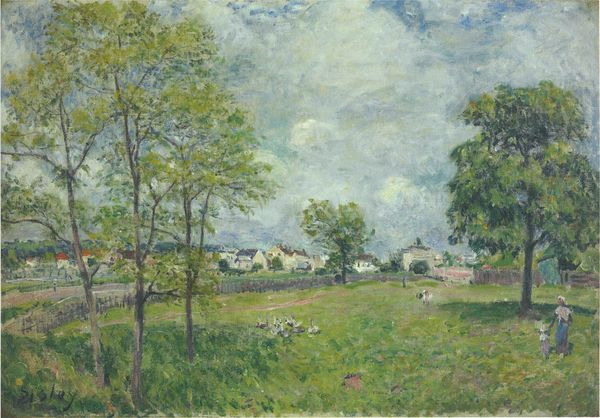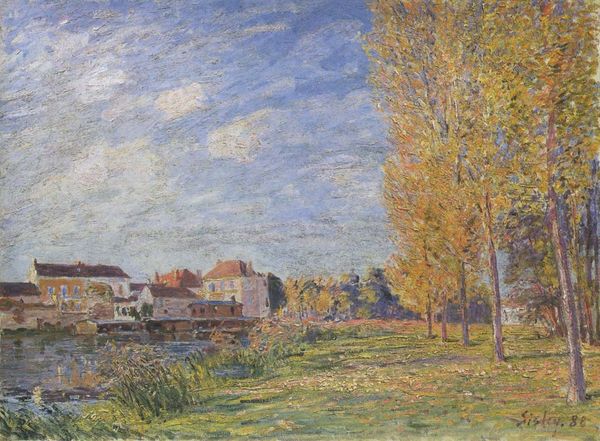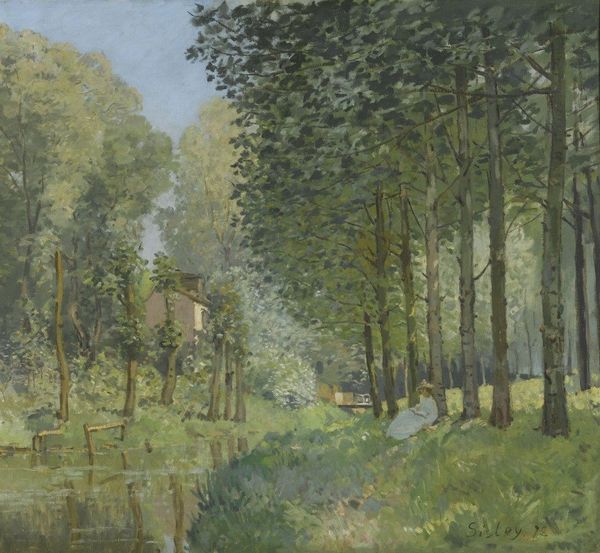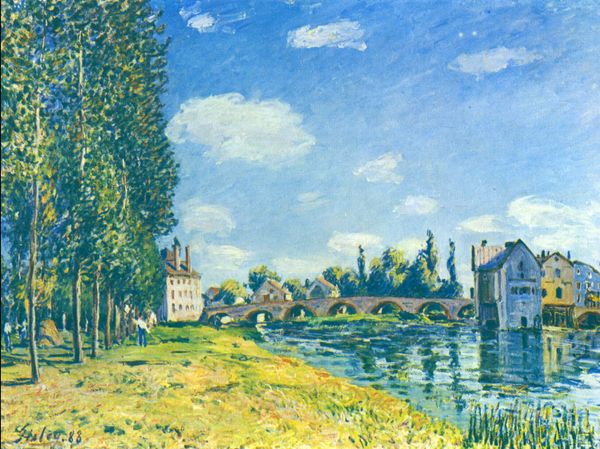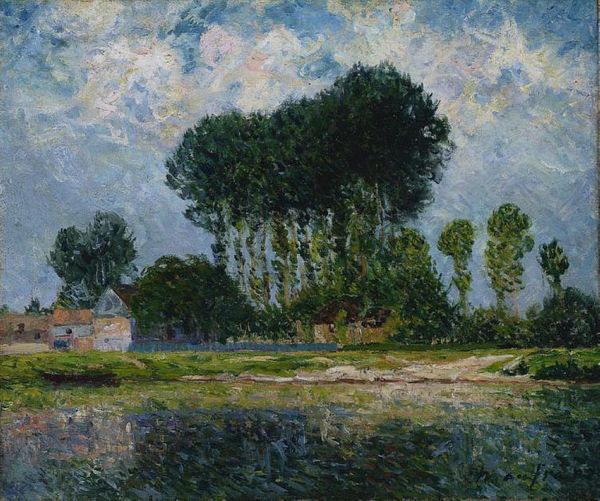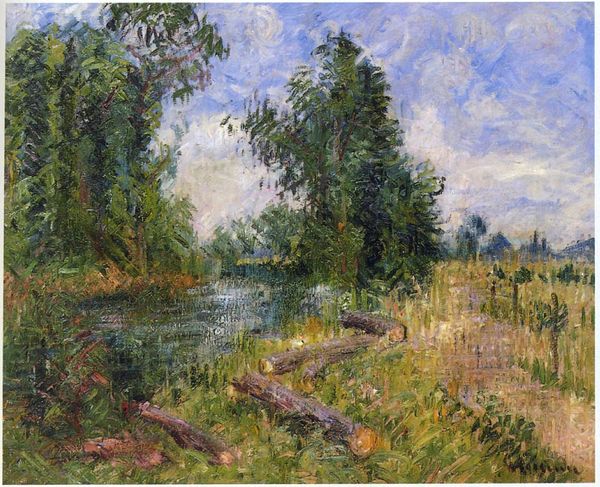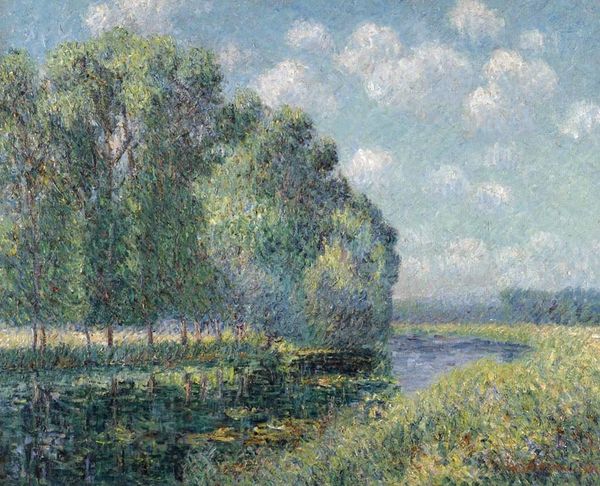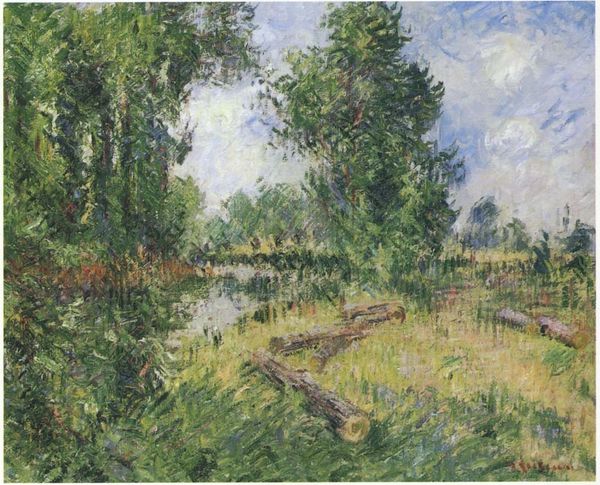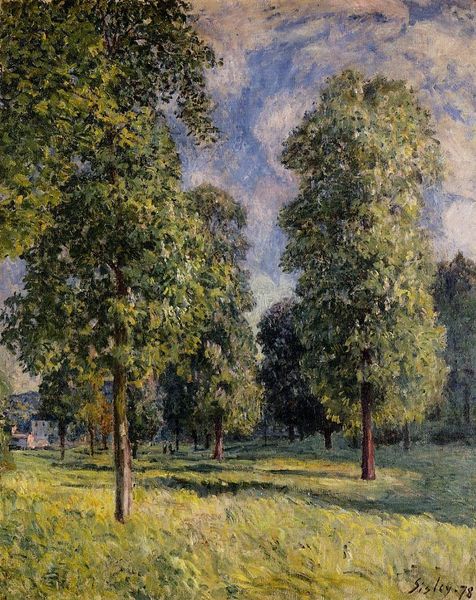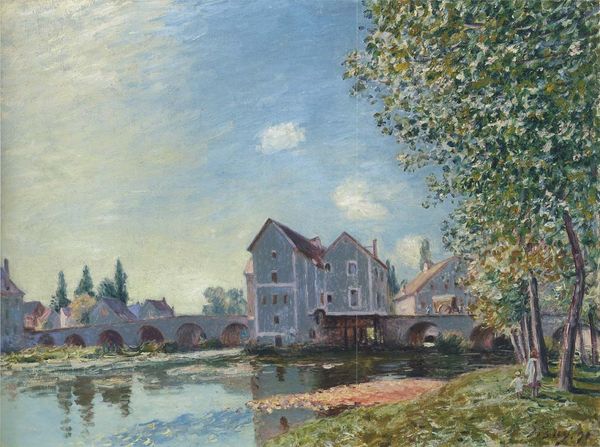
Copyright: Public domain
Curator: Alfred Sisley's "Spring Sunshine on the Loing," created in 1892, captures a fleeting moment along the river. Editor: It feels like such a quiet, peaceful scene. I’m struck by how the dappled light makes the whole painting shimmer, like the canvas itself is breathing. Curator: Sisley was deeply involved with Impressionism and worked closely with artists like Monet and Renoir, although he didn't achieve the same commercial success in his lifetime. We have to remember Impressionism was about challenging the established Salon system in France and celebrating modern life outside of the studios. Editor: Yes, but look at how he applied the oil paint – quick, broken strokes. You can almost feel the movement of the air and the water, so characteristic of the movement's plein-air painting. You almost feel the need to analyze its brushstrokes, pigment application, and textural choices that ultimately contribute to the experience of the landscape. Curator: Sisley was known for his commitment to capturing atmospheric conditions and their effects on the landscape. In his later career, he moved around France in search of new and appealing places and sights. This devotion allowed for a wider public appreciation for locations further from Paris. Editor: He's doing more than recording how light changes; he’s using materiality of the paint itself. I wonder how long he spent working on this painting, outside in that actual sunlight! It makes me wonder if Sisley sought to transform a mundane industrial space through the materiality and application of paint? Curator: The interesting part is to realize that landscapes weren't viewed as "important" history painting during this period. Sisley's landscape paintings offered new interpretations to understand both city and rural culture that was rising during that time. Editor: It feels incredibly personal and immersive in its rendering. Thanks for shedding light on the importance of landscapes in modern life! Curator: My pleasure. Examining paintings such as these helps us consider what paintings like this mean in history.
Comments
No comments
Be the first to comment and join the conversation on the ultimate creative platform.




